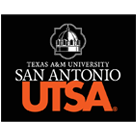Document Types
Individual Presentation
Location
Texas A&M University-San Antonio | HALL 204
Start Date
2-22-2024 4:50 PM
End Date
2-22-2024 5:10 PM
Track
Culture and Pedagogy
Abstract
Cities are the hubs of the modern world, and in border towns between states with different languages, these hubs are bilingual. Such bilingual towns offer opportunities to examine the extent to which translation, including the decision to not translate, plays a role in shaping the public spaces of cities (see González Núñez & Meylaerts). This presentation seeks to do that by relying on the methods developed for the study of the linguistic landscape (e.g., Landry & Bourhis). It will report on such a study as carried out in Brownsville, a city that sits on the Texas border with Mexico. The study surveyed two streets in Brownsville with a special concern for both untranslated and translated signs as a way of thinking about what the presence of each type of sign indicates. Special attention was paid to the presence of English and Spanish in public signs. The presentation of the study’s findings will serve to discuss the role of both non-translation and translation in creating a public space that may (or may not) be inclusive of the local population in terms of language. This will help draw conclusions about what the use of translation in the linguistic landscape can tell us regarding public policy, particularly among bilingual Spanish/English populations in the United States. These conclusions include the observation that the linguistic landscape is not the result of organic developments taking place in a laissez-faire language system but rather a reflection of public policy choices in favor of the hegemonic language.
Recommended Citation
González Núñez, Gabriel, "Translation in the linguistic landscape along the US border with Mexico" (2024). 11th National Symposium on Spanish as a Heritage Language. 13.
https://digitalcommons.tamusa.edu/heritage_spanish/SCHEDULE/Thursday/13
Included in
Language Interpretation and Translation Commons, Spanish and Portuguese Language and Literature Commons
Translation in the linguistic landscape along the US border with Mexico
Texas A&M University-San Antonio | HALL 204
Cities are the hubs of the modern world, and in border towns between states with different languages, these hubs are bilingual. Such bilingual towns offer opportunities to examine the extent to which translation, including the decision to not translate, plays a role in shaping the public spaces of cities (see González Núñez & Meylaerts). This presentation seeks to do that by relying on the methods developed for the study of the linguistic landscape (e.g., Landry & Bourhis). It will report on such a study as carried out in Brownsville, a city that sits on the Texas border with Mexico. The study surveyed two streets in Brownsville with a special concern for both untranslated and translated signs as a way of thinking about what the presence of each type of sign indicates. Special attention was paid to the presence of English and Spanish in public signs. The presentation of the study’s findings will serve to discuss the role of both non-translation and translation in creating a public space that may (or may not) be inclusive of the local population in terms of language. This will help draw conclusions about what the use of translation in the linguistic landscape can tell us regarding public policy, particularly among bilingual Spanish/English populations in the United States. These conclusions include the observation that the linguistic landscape is not the result of organic developments taking place in a laissez-faire language system but rather a reflection of public policy choices in favor of the hegemonic language.

